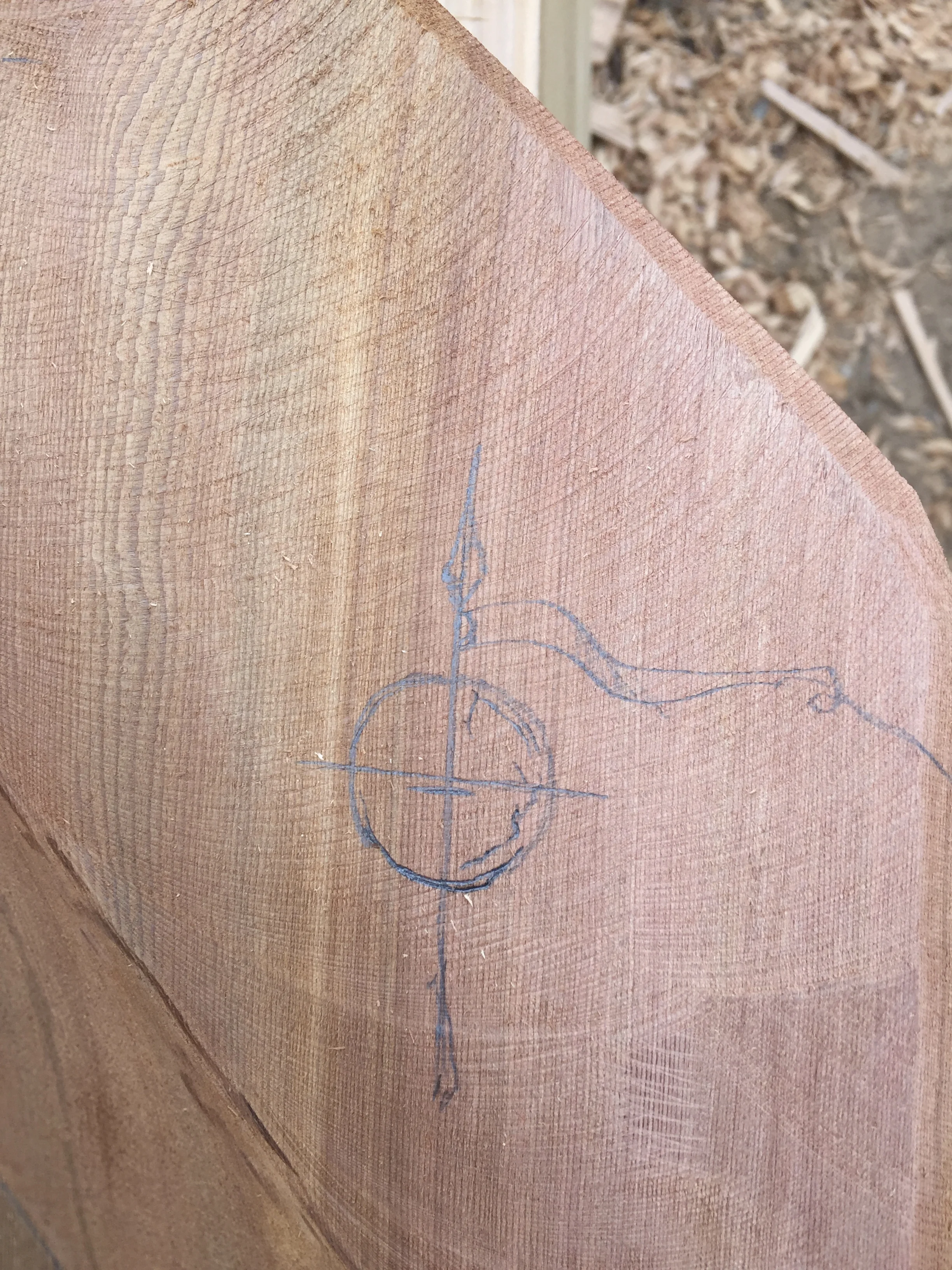Monastery Timber Frame, Day 10
Stocking and staging material is one of the simplest and most helpful processes to begin any project. Timber framing especially benefits from this process due to the large and expensive material in use. Typically, timbers will arrive to the site bound together and offloaded onto a couple of 2x4 spacers. Left in such a state the timbers are liable to wrack, warp, and gather mold... and it just looks sloppy.
The preventative solution is to create a blocking system that keeps the material off the ground and in a level manner. Begin by creating two blocks and space them apart so that they are a quarter of the way from each end of the timber. After both the blocks are in place they each need leveling out. It is only necessary to level each block to itself, for doing so creates two parallel lines upon which the timbers rest athwart*. Depending on the site and how the water drains the blocking ought to stand 3-6" tall. Note, that these blocks can be made out of any wood at hand. On this particular project we used 2x12" headers that had been ripped out due to a mistake on a nearby project.
Stack the first layer of timbers onto the blocking system and then before each proceeding course place a couple of 2x stickers directly above the original blocks. Placing stickers in this manner serves two purposes. First, they create space around the material to allow for proper ventilation. Any moisture that finds its way onto and into the timber has a means of escape and will not wait around to form mold. The other benefit that the stickers provide is space for hands and fingers to easily grab the ends of the timber and carry it away without marring the wood or the worker.
Considering the heavy and costly nature of timber it is advisable to stock the material in such a way so as to avoid moving a piece to get at another. Not only does this ounce of planning prevent needless work, but it also helps to ensure that the right piece is selected and used in the proper place. For this monastery project our material list includes
- 10x10" @10'
- 6x10" @12'
- 6x10" @18'
- 6x10" @20'
- 6x12" @18'
- 6x14" @20'
Most of those pieces are cut into several shorter lengths and it is critical to not start cutting into the wrong timber. In the heat of the moment such simple mistakes are all too easy to make, and proper planning helps to prevent this. Another advantage to combing over and arranging the material is the opportunity to confirm that the supplier sent the correct number of pieces corresponding with each dimension. Staging the material on this job revealed that the supplier sent a bunch of 6x10"s @ 14' instead of 12'. Turns out they decided to send out the longer material because they were out of the 12' stock. Certainly, such a change is not detrimental, but it does create a moment of confusion. It is best to sort through those moments and smooth out the wrinkles on the front end.
* Athwart: from side to side of; across. Recently, I heard a master blacksmith use this term to describe a particular filing technique. In context it seems to denote informal perpendicularity. I have grown rather fond of the word and thought I'd pass it along for others to enjoy and use as they see fit.







